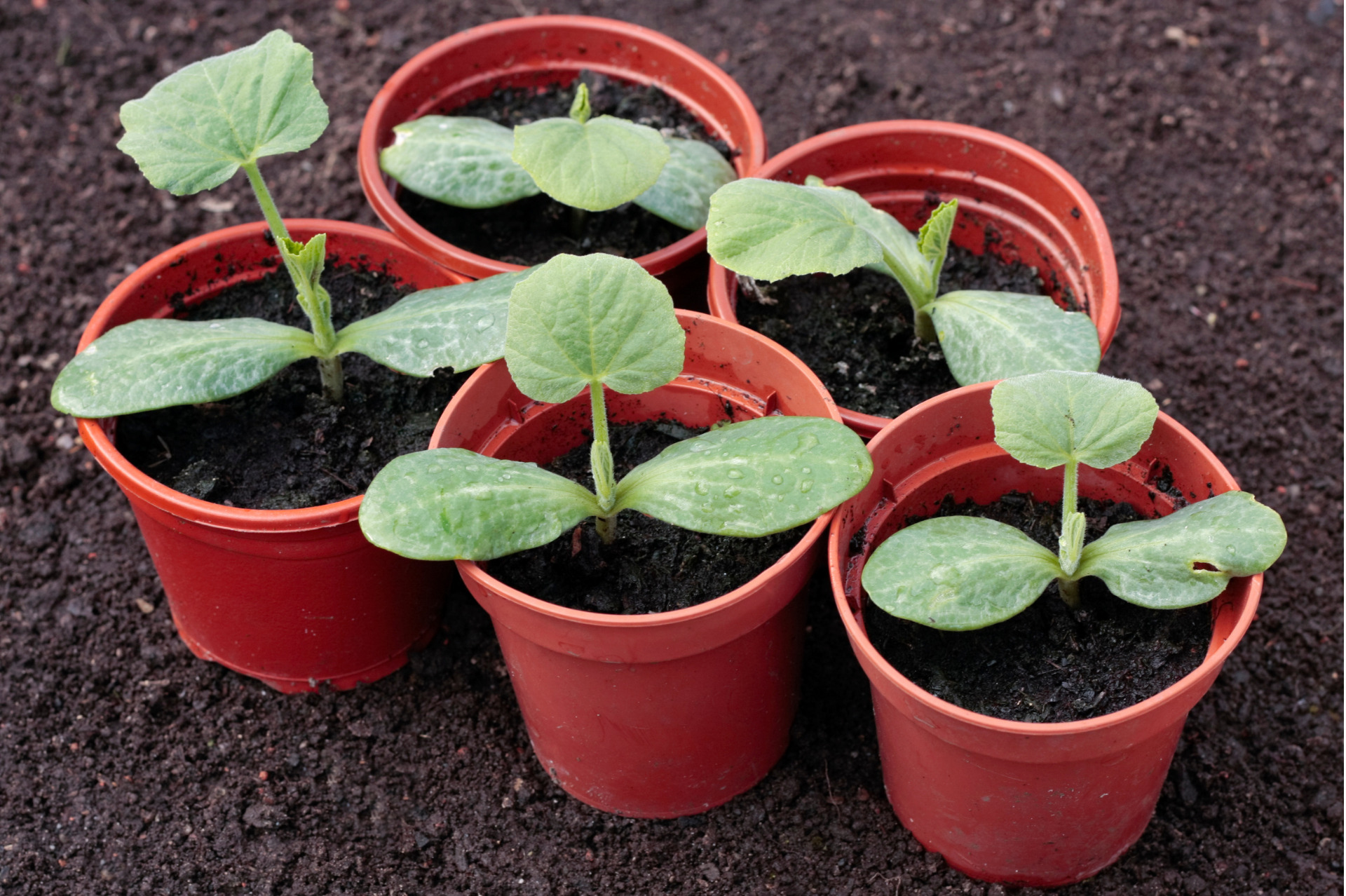
Table of Content
Growing vegetables in pots is very enjoyable and satisfying and although it may seem like an overwhelming task, it’s actually a lot easier than it sounds. You don’t even need to have a yard or space in your garden to have your own little vegetable crop. In fact, you can grow almost any vegetable you want out of pots or containers you have at home!
In this article, we’ve got a list of 10 fast-growing vegetables in pots for those of us who are impatient to harvest. You can grow any of these vegetables in your raised bed garden as well so let’s go ahead and have a look!
Tomatoes

Tomatoes are some of the easiest vegetables to grow in pots or containers. After planting, you can expect to harvest them in 40 to 50 days , which is a really satisfying experience. You can plant both cherry tomatoes and normal ones since they are both very easy types to grow. However, cherry tomatoes can take a little longer, from 60-65 days.
When it comes to tomatoes, we recommend growing them from seedlings rather than seeds, since this is a faster and easier way to go about it.
Mushrooms

Yes, mushrooms fit into the category of vegetables and are excellent plants to grow in pots or containers as long as you fill the container with a suitable growing material. Since mushrooms are a fungus unlike normal plants, growing them is a slightly different process. Smaller mushrooms can be easily grown in a day or two but if you want larger ones, like the size of your plate, you need to give them up to 6 days.
For best results, you need to make sure your mushrooms have the ideal conditions to grow. You can use practically anything you want for a container as long as it’s 8 – 12 inches deep and has a good draining system. Mushrooms can be rather fussy, so you need to pay a bit of extra attention to them but in the end, it’ll be worth it!
Carrots

Carrots, unlike tomatoes, can be grown directly from seeds and can take from 70 – 80 days. However, if you’re impatient and feel like you can’t wait that long, you can just chop off the leaves and them, while leaving the carrots to grow. Carrot leaves are perfectly edible and healthy too, and there many ways you can incorporate them into your meal.
If you’re planning to grow carrots, especially longer ones, select deeper containers and pots to give them enough space to grow.
Lettuce

Lettuce is one leafy vegetable that grows super fact. It only takes about 45 – 50 days for lettuce to grow from seeds and become fully mature but if you like, you can also re-grow the lettuce you buy from the store.
To do this, cut off the end of lettuce (about 2 inches) and plant the end piece in a pot or container with proper soil. In as little as a week, you’re likely to see the leaves appearing and soon you’ll be putting lovely, fresh lettuce in your salads.
Potatoes
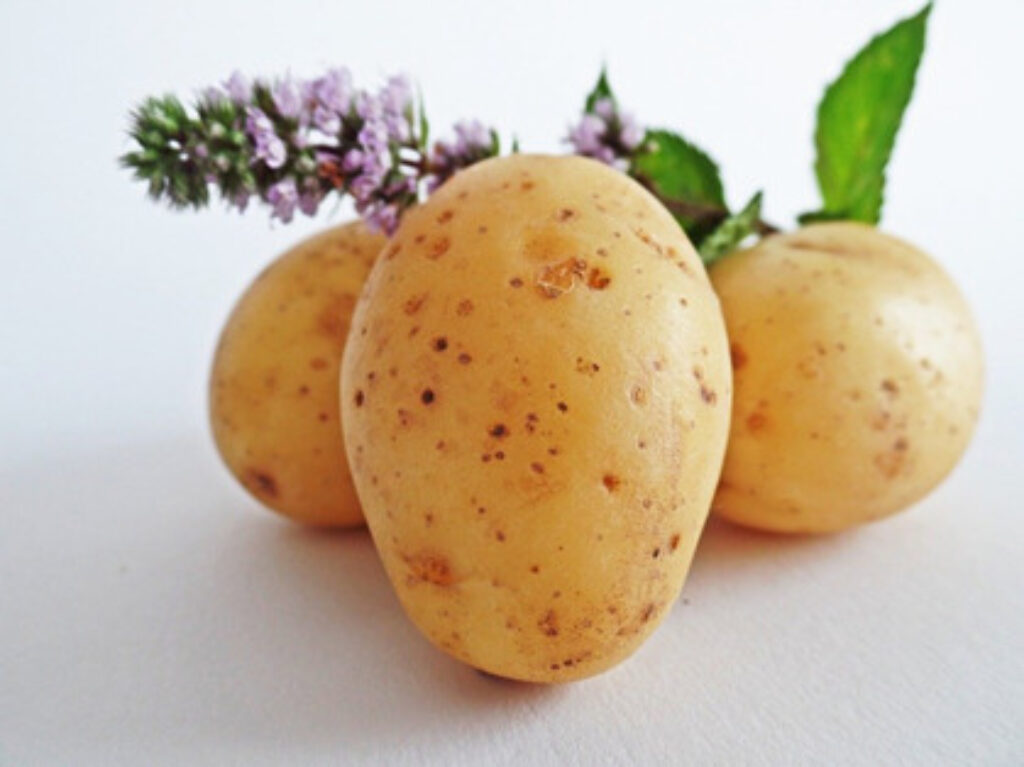
Home-grown potatoes taste a lot more delicious than store-bought ones, but they have a much higher water content and need a lot of soil and water to grow. If you’re willing to spend the time and make the effort, they’re definitely worth it. These tubers need to be exposed to full sun so that they can grow faster and healthier and their growth time is between 70-129 days.
Store-bought potatoes can be grown easily but you must remember to water them every day. If they’re left to dry out, it can result in a lower yield. If the potatoes have little eyes all over them, it means that they’re ready to grow so just bury them in potting soil with the eye facing up and pay attention to them every day.
Peppers
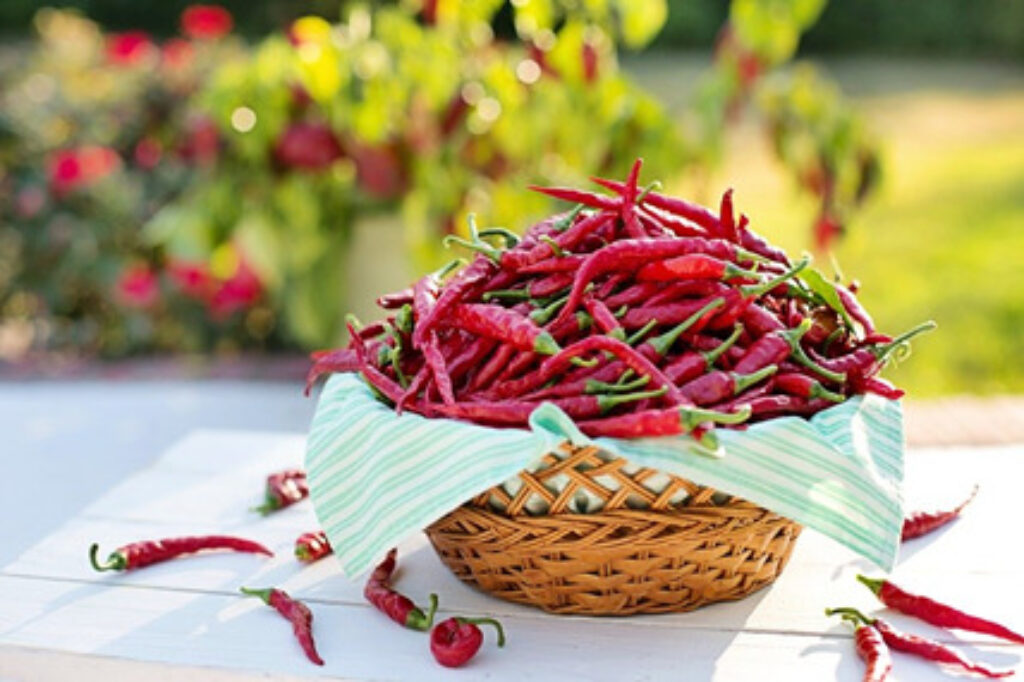
Peppers, hot or sweet, can be easily grown and flourish well in pots or containers. You can harvest them in 60-90 days after planting. If you like, you can always grow these from seeds or seedlings, since the only difference is that seedling will give fruit earlier.
All you need to grow peppers is a lot of sunlight, an open environment, proper drainage and regular watering. However, hot peppers can take up to 150 days to grow so you if you want to harvest your own peppers as soon as possible, try planting sweet ones instead.
Spring Onions
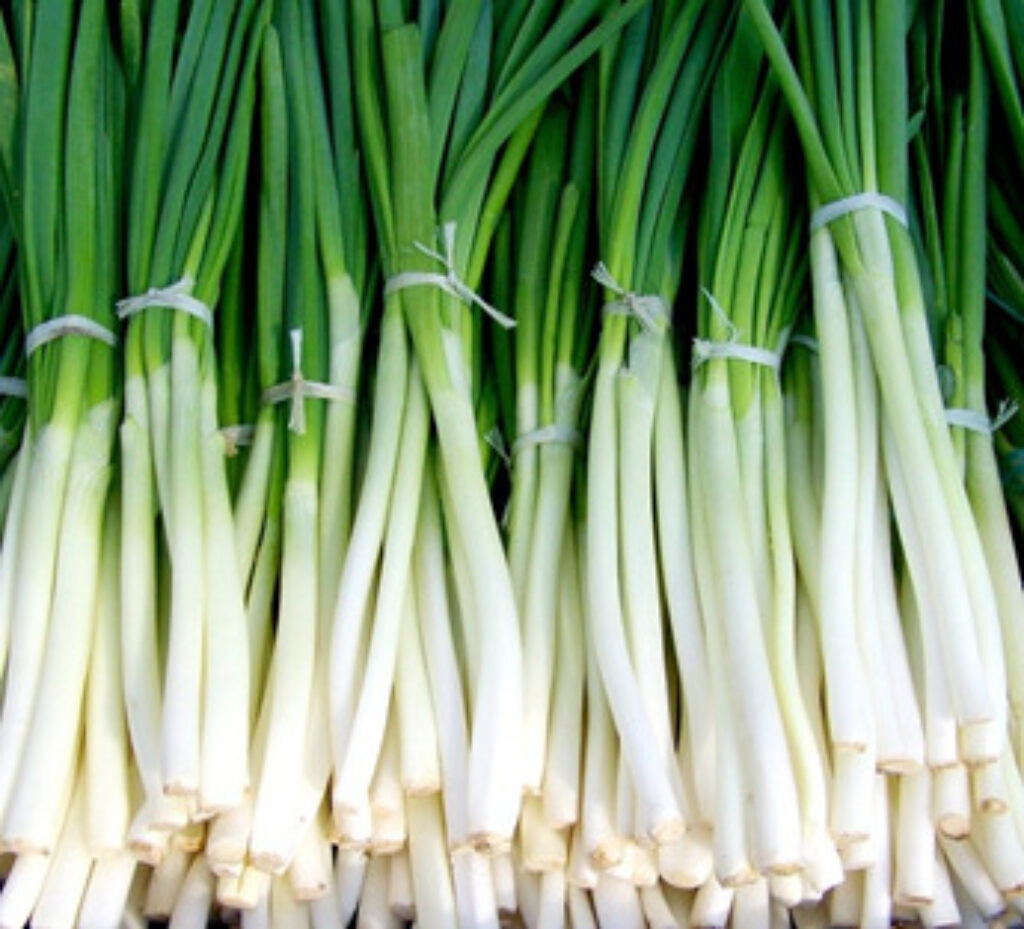
Also known as scallions, spring onions are some of the easiest and fastest vegetables to grow in pots, taking only 6-8 weeks for full growth. This type of onion doesn’t have a bulb at the end since it’s very young and harvested before the bulb has a chance to swell.
These onions not only taste great but they are also very healthy for the body so plant some every two weeks to have an interrupted supply of fresh spring onions any time you want.
Squash
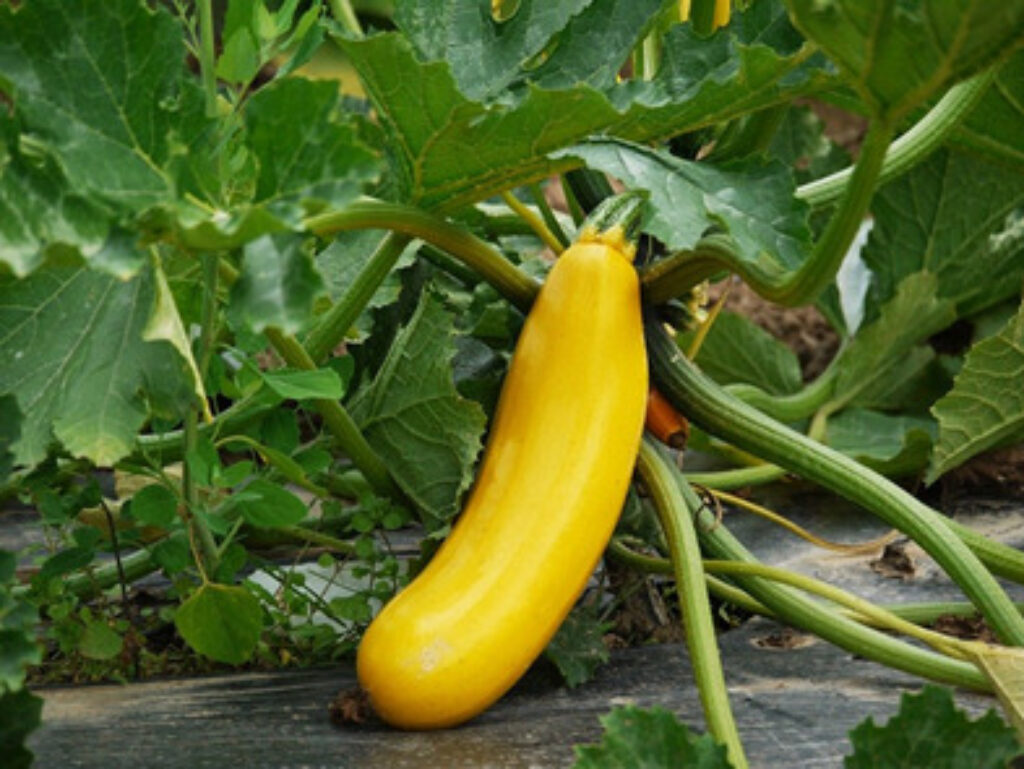
Squash is a vegetable that grows very well in pots but if you’re planning to plant some, go for the yellow ones since these score over all the other types. Yellow squash is very easy to grow than other types of squash and take only 50-70 days to harvest. However, make sure you harvest these in time because if you don’t, the production of new flowers can be reduced so you will have less squash to plant for the next round.
Radishes
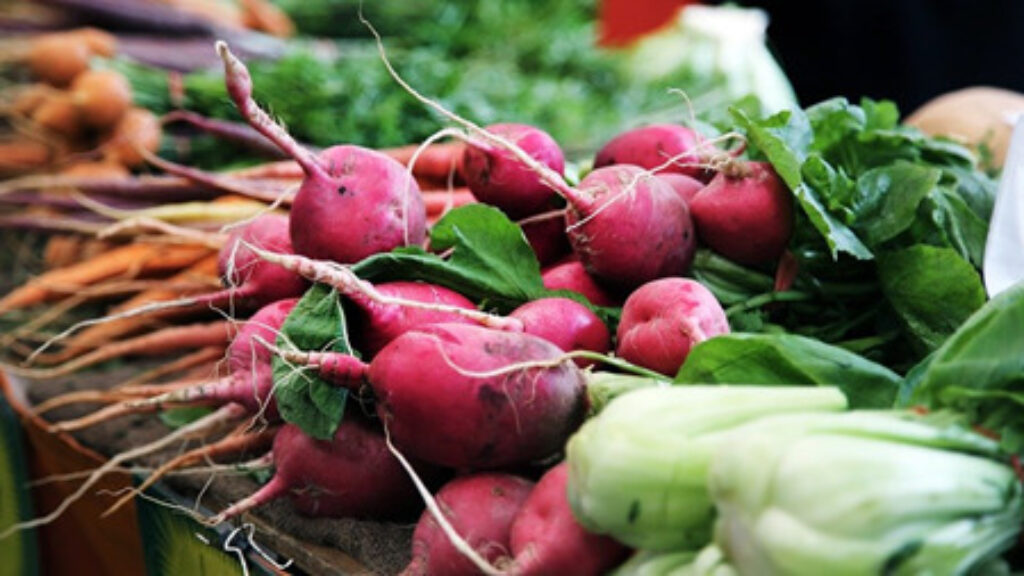
Radishes come in many varieties and grow very quickly in pots or containers. They’re not fussy vegetables since they need a neutral temperature and you can grown them in part shade to full sunlight.
These vegetables are grown in two seasons: spring and winter. Spring radish takes about 20-30 days to mature fully whereas winter radish can take a bit longer (about 50-60 days). Both types of radish can be grown directly from seeds and are very easy and fun to take care of.
Cauliflower
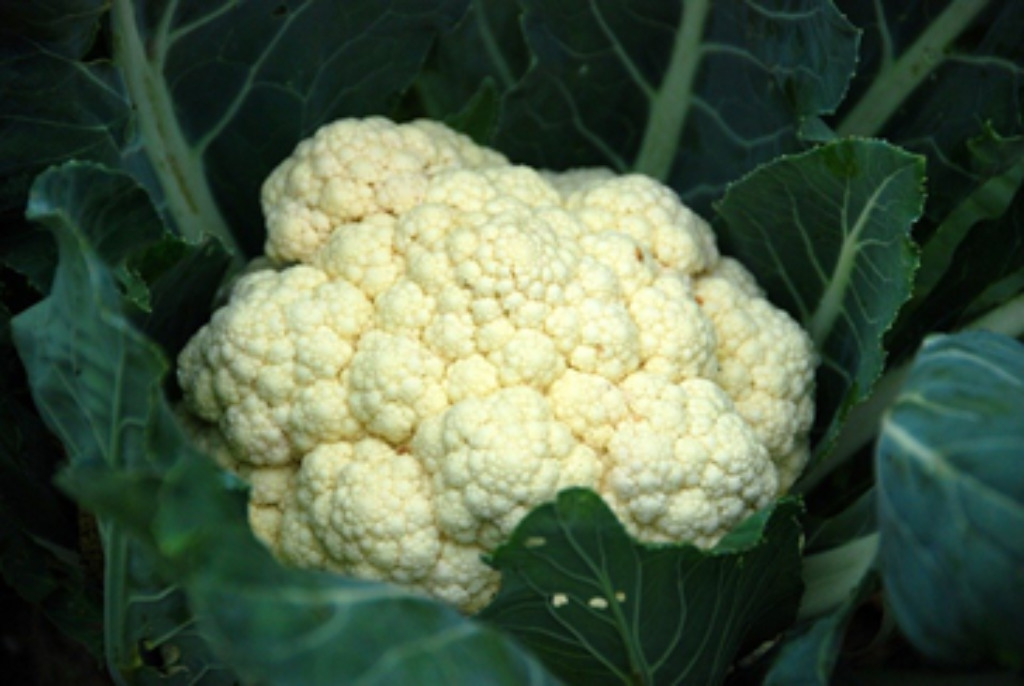
Cauliflower requires a maximum growth time of 8 weeks, provided that you keep it in full sunlight for at least 6 hours every day to ensure best growth. You can grow them from both seeds and seedlings but we recommend starting with seedlings especially if you’re a beginner since its less complicated. This is because cauliflowers need constant care and are picky plants to grow. The slightest change in temperature, water requirements and sunlight can easily disturb their growth so you’ll want to be careful with this one.
How to Choose the Right Pot
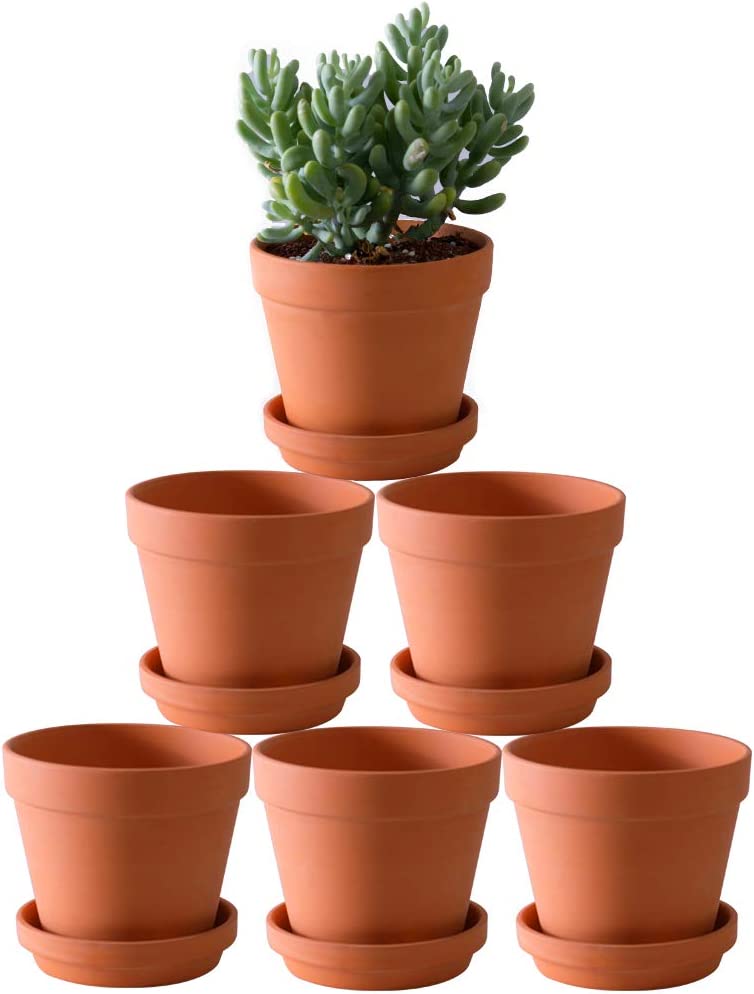
If you’re considering growing your own vegetables in pots, you might want to take the type of pot you can into consideration. When choosing the right pot for your vegetable plants, you’d want to take the following factors into consideration so that you won’t face any issues when planting.
1. Know the right pot size
In pots that are too big, the soil takes time to dry and this can make your plant prone to root rot. On the other hand, if the plant is too large for the pot, it can tip over easily and the soil will dry up so quickly that you’ll have to water it too frequently. As a result, your plant could get root-bound and stunted. To prevent this from happening, choose a pot that is comparable to the size of your plant.
2. Decide on the material
The most commonly used materials for plant pots are terra cotta, plastic, or clay. Terra cotta pots are heavier than plastic and are available in beautiful designs. If you’re planning to hang the pot or place it on a wall shelf, opt for plastic since it’s very lightweight.
However, if you’re going for terra cotta pots, you might need to spend more than you would on plastic ones. Since these pots are porous, you will have to water the plants more frequently. Terra cotta pots are perfect for plants that enjoy dry or well-aerated soil such as orchids, cacti, and succulents.
3. Consider the drainage
Whichever type of pot you choose, it needs to have a drainage hole at the bottom of it to allow water out and air inside. Plants tend to die when they’re in standing water for too long so having a draining hole is essential.
If you’d prefer to use a pot without any drainage holes in it for decorative purposes, you can choose wicker baskets, glass bowls, or metal boxes. You can even try unique items like cookie jars, vintage enamelware pieces, and serving bowls to grow your vegetable plants.
If you decide to go with one of these, you could always drill a few holes into the bottom of the pot to ensure water drainage.
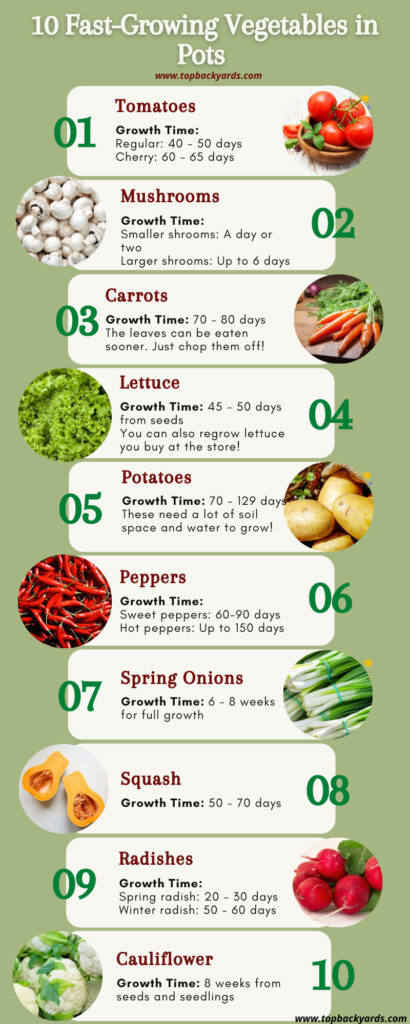
FAQ’s about Growing Vegetables in Pots
Yes, you can grow vegetables in any type of pot as long as it has proper drainage and is the right size for the plant.
Use a high-quality potting soil that is specifically designed for container gardening. It should be well-draining and rich in nutrients.
Water your vegetable pots when the top inch of soil feels dry to the touch. This may be once or twice a day, depending on the plant and the weather.
Yes, you can fertilize your vegetable pots. Use a balanced fertilizer and follow the package instructions for the recommended application rate and frequency.
Most vegetables can be grown in pots, but some do better than others. Consider the size of the plant, the depth of the roots, and the amount of sunlight it needs before choosing what to grow.
Most vegetables need at least six hours of direct sunlight per day. Some, like tomatoes and peppers, need even more. Make sure to place your vegetable pots in a sunny location and rotate them periodically for even growth.
The Take-Away
So there you have it! Now that you’ve got all the information you need you can start growing your own vegetables in pots! Try growing some of the vegetables on this list and pretty soon, you’ll be looking at your own lovely harvest!



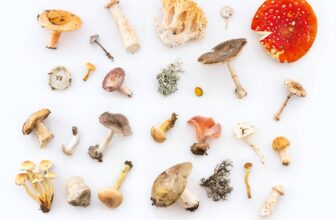


Very useful 👍
Thank you! We appreciate your feedback.